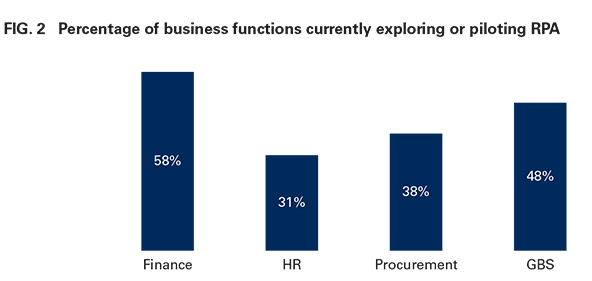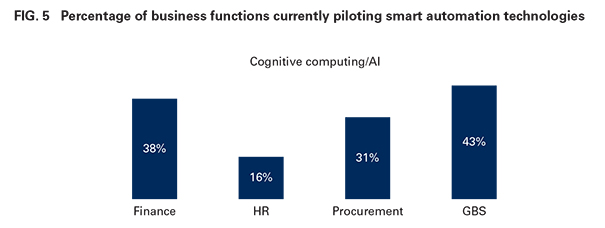A new study provides insight for executives as they look ahead, highlighting the importance of carefully assessing automation opportunities, building dedicated RPA capabilities and approaching RPA as part of a broader smart-automation platform for the future.
Over the past few years, robotic process automation (RPA) has become a dominant theme of back-office performance improvement. While early initiatives have produced some tangible successes, many organizations have yet to scale their use of RPA to a level that is making a major impact on performance.
Despite its relative ease of implementation compared to many enterprise technology solutions, RPA has come with a greater-than-expected learning curve.
According to Erik Dorr, Vice President, Research and one of the report's authors, supply chain managers should exercise some caution before committing too much capital for adaptation.
“Many of the same critical thinking methods apply here, too,” he says. “We advise a steady and measured approach to implementing RPA, and making certain that you have the right talent to sustain it.”
While scaling up and expanding adoption of RPA has proven to be challenging, RPA is still poised to play a key role in digital transformation, add researchers.

That role, however, will not be one of stand-alone deployments but rather as one of a number of tools to automate and integrate transactional, decisioning and knowledge work. To plot a path ahead and realize the promise of step-change performance improvement, business functions must begin thinking broader and longer term – developing a vision and roadmap for smart automation that includes both a strategic and tactical role for robotic process automation.
Researchers note that at the same time, as supply chain managers seek to expand the use and role of RPA within their operations, “a reality check” is warranted.
Joshua Nelson, Associate Principal, S&O Supply Chain Practice, says ttrial and error is necessary to learn the capabilities and limitations of RPA, companies that expect mainstream adoption in the near term – as our research suggests many do – will need to exercise discipline around opportunity analysis and development of a business case as part of a robust process for managing the RPA lifecycle.

Pilot activity is well underway. Nearly 60% of finance organizations and 48% of GBS organizations are currently exploring or piloting RPA solutions, while around a third of HR and procurement organizations also have RPA pilots in place.
While many organizations still consider themselves in the pilot stage, there have been many success stories – both large-scale adoptions and smart small interventions
Procurement functions lag well behind finance and global business services (GBS) , but slightly ahead of Human Resources.
SC
MR


More Automation
- Survey reveals strategies for addressing supply chain, logistics labor shortages
- Six Factors to Consider Before Automating Warehouses
- From Whiteboard to Warehouse: Writing an Effective Warehouse Automation RFP
- 2023 Warehouse/DC Operations Survey: Automating while upping performance
- Fast Tracking ROI: Agile Logistics through Automation, AI, and Optimization
- Generative AI, Robotics and Automation: Supply Chain Friends or Foes?
- More Automation
Latest Podcast

 Explore
Explore
Topics
Procurement & Sourcing News
- Israel, Ukraine aid package to increase pressure on aerospace and defense supply chains
- How CPG brands can deliver on supplier diversity promises
- How S&OP provides the answer to in-demand products
- There is still work to do to achieve supply chain stability
- Blooming success: The vital role of S&OE in nurturing global supply chains
- How one small part held up shipments of thousands of autos
- More Procurement & Sourcing
Latest Procurement & Sourcing Resources

Subscribe

Supply Chain Management Review delivers the best industry content.

Editors’ Picks





